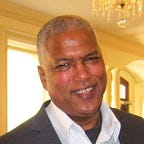How Your City Came to Have a Black Side of Town
It Wasn't a Coincidence, it Was Municipal Planning
If you live in a mid-sized city in the United States, chances are there is a Black side of town. Of course, there may be exceptions, such as West Virginia, Wyoming, Vermont, Maine, New Hampshire, and Iowa, which the census says are the areas with the largest share of white residents in America. But even these cities have sections, like what was once the Triangle District in Charleston, West Virginia, and the West Side, where much of the Black community resides. I once spent three days riding through Iowa on a bicycle from North to South and was surprised that I saw only one Black person during my travels. Yet, I’ve been told there are Black sides of town in Davenport, Des Moines, Waterloo, and elsewhere.
One shouldn’t make the mistake of assuming that every black community is poor. Indeed, there are many doctors, lawyers, teachers, and other professionals who live on the Black side of town. And Black entrepreneurs can be readily found. However, throughout American history, their efforts were often curtailed, as black entrepreneurial projects have become the target of attacks. The Greenwood District in Tulsa, OK (Black Wall Street); Seneca Village, NY; Rosewood, FL; Ocoee, FL; Wilmington, NC; and Oscarville, GA are noteworthy examples.
